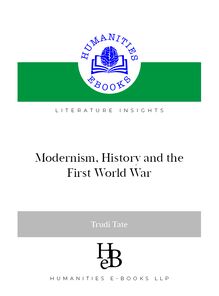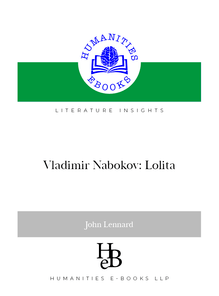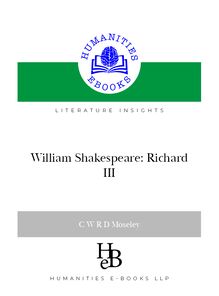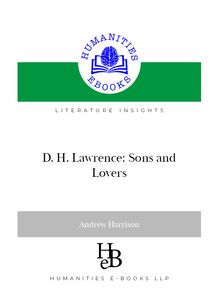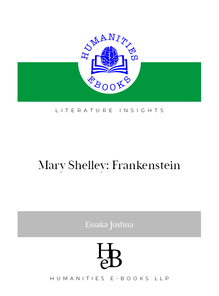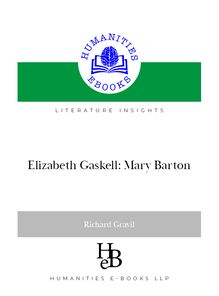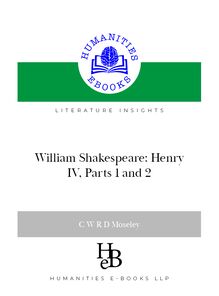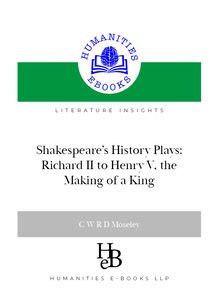-
 Univers
Univers
-
 Ebooks
Ebooks
-
 Livres audio
Livres audio
-
 Presse
Presse
-
 Podcasts
Podcasts
-
 BD
BD
-
 Documents
Documents
-
- Cours
- Révisions
- Ressources pédagogiques
- Sciences de l’éducation
- Manuels scolaires
- Langues
- Travaux de classe
- Annales de BEP
- Etudes supérieures
- Maternelle et primaire
- Fiches de lecture
- Orientation scolaire
- Méthodologie
- Corrigés de devoir
- Annales d’examens et concours
- Annales du bac
- Annales du brevet
- Rapports de stage
La lecture à portée de main
384 pages
English
Découvre YouScribe en t'inscrivant gratuitement
Je m'inscrisRomantic Dialogues: Anglo-American Continuities, 1776-1862 , livre ebook
Découvre YouScribe en t'inscrivant gratuitement
Je m'inscris
Obtenez un accès à la bibliothèque pour le consulter en ligne
En savoir plus
En savoir plus
384 pages
English
Obtenez un accès à la bibliothèque pour le consulter en ligne
En savoir plus
En savoir plus

Description
Romantic Dialogues, first published in 2000, contributed to the modern recovery of a transatlantic dimension in literary studies. Part 1 of the book reassesses the events of 1776 as a painful amputation, severing one part of a close-knit republican community from the other. It looks at English visions of America, from Blake’s America, to Barbauld’s Eighteen Hundred and Eleven, and at Romantic Americans such Samuel Williams, William Ellery Channing, Gilbert Imlay and Estwick Evans, who absorbed England’s Romantic revolution long before America’s literary awakening took place. It considers, also, the periodical wars that followed the War of 1812, America’s aspiration to an intellectual emancipation to match its political independence; and the kinds of continuing relationship with ‘the old home’ to be found in James Fenimore Cooper, Ralph Waldo Emerson and Elizabeth Palmer Peabody. Part 2 explores numerous barely recognised transactions between English Romantic poets and the canonical writers of the ‘American Renaissance’. Starting with Cooper’s struggle with Edmund Burke in The Pioneers, it places Emerson’s Nature, Thoreau’s Walden, the romances of Poe and Hawthorne, Melville’s Moby-Dick and Whitman’s ‘Song of Myself’, in an Atlantic context. These writers still had English ears: inheriting the blissful dawn that took place in England between Blake’s Songs and Wordsworth’s Prelude, they amplified the English poets’ celebration of nature, liberty and imagination—and ‘human nature seeming born again’—but, equally Romantically, they came to mourn the fatal compromises in America’s experimental polity. Diverging somewhat from these themes, this edition includes a new chapter on William Cullen Bryant and an Epilogue on how the prosody of Whitman and Dickinson responded to the music of Tennyson, whose songs, Whitman memorably said, entered into the American character ‘inland and far West, out in Missouri, in Kansas, and away in Oregon, in farmer’s house and miner’s cabin’.
Sujets
Informations
| Publié par | Humanities eBooks |
| Date de parution | 11 janvier 2021 |
| Nombre de lectures | 0 |
| EAN13 | 9781847603487 |
| Langue | English |
| Poids de l'ouvrage | 4 Mo |
Informations légales : prix de location à la page 0,0000€. Cette information est donnée uniquement à titre indicatif conformément à la législation en vigueur.
Extrait
ROMANTIC dialogues
angloamerican continuities,
17761862
Richard Gravil
Romantic Dialogues: Anglo-American Continuities, 1776–1862
“How this study is received will say as much about the recovery of serious interest in literary history as about the work’s quality. Learned, rigorous in testing its assertions, mordant and spirited in its expression,Romantic Dialogues makes an important claim: that American Literature of the nineteenth century knowingly attempted to fulîll the visionary promises of British Romanticism… What was reborn in the American Renaissance he writes, was ‘as much Romanticism as America’. It is as if in the works of Whitman and Melville the ghosts of Blake, Wordsworth and Coleridge were posing a British alternative to Victorian conservatisms.… He makes one wonder how one ever read the American text at all without the British context. …. An extraordinary achievement…This is real work”
—Robert Weisbuch,New England Quarterly:
“Challenging the conventional notion that American literature emerged from Emerson’s early essays, Gravil positions Blake, Wordsworth and Coleridge as its true progentitors: just as Locke’s libertarian political writings bore their greatest fruit in Jefferson’s famous manifesto, so the English romantics’ most characteristic notions of liberty and selfhood were fulîlled in the United States and its literature. … Gravil’s deft and learned application of key texts in British Romanticism to works by Thoreau, Melville, Dickinson, Whitman and Hawthorne powerfully challenge the easy presumption of an autochtonous American writing.”
—Kurt Eisen,American Literature
“ ... a major study, alert to and at home with textual nuance and larger questions … persuasively proving and describing a series of intricate, intertextual relationships: Gravil allows for uniqueness and difference; there is no ‘Englishing’ of his American authors, but a brimmingly revelatory stream of suggested connections.Romantic Dialogues is a ground-breaking study which bears witness to a generous, vigilant, and witty critical intelligence.”
—Michael O’Neill ,Symbiosis
AlsobyRichARdGRAvil
Wordsworth: The Prelude,a Casebook (1972)
Swift: Gulliver’s Travels, a Casebook (1974)
Coleridge’s Imagination: Essays for Pete Laver edited with Lucy Newlyn and Nicholas Roe (1985)
The Coleridge Connection: Essays for Thomas McFarland, edited with Molly Lefebure (1990)
Wordsworth’s Bardic Vocation, 1787–1842(2003 and 2015)
Master Narratives: Tellers and Telling in the English Novel.Essays for Bill Ruddick(2001)
Wordsworth and Helen Maria Williams; or, the Perils of Sensibility (2010)
The Oxford Handbook of William Wordsworthedited with Daniel Robinson (2015)
R D OMANTIC IALOGUES
ANGLOAMERICANCONTINUITIES, 1776–1862
Richard Gravil
2nd edition, revised and enlarged
HEB☼HumanitiesEbooks
© 2000, 2015 Richard Gravil
The Author has asserted his right to be identiîed as the author of this Work in accordance with the Copyright, Designs and Patents Act 1988.
Cover image: from William Blake,America: a Prophecy ©TheFitzwilliam Museum, Cambridge
First published by Palgrave-St Martins in 2000. Second revised edition published in 2015 by Humanities-Ebooks, LLP Tirril Hall, Tirril, Penrith CA10 2JE.
Availability: In Paperback from Lulu.com As a library PDF from EBSCO, Ebrary and MyiLibrary. In PDF from Google In Kindle format from Amazon In PDF, Mobi, and ePub from http://www.humanities-ebooks.co.uk
Because of complex layout, the Paperback and PDF versions are recommended
ISBN 978-1-84760-348-7 PDF ISBN 978-1-84760-349-4 Paperback ISBN 978-1-84760-350-0 Kindle ISBN 978-1-84760-351-7 ePub
Violetta Zara Turner 1914–2004
Contents
IntroductIon
Part1: revolutionandindePendence, 1775–1837
chapter1: theanglo-amerIcanrevolutIon;or, 1776andallthatchapter2: romantIcamerIcaschapter3: consanguInItyandIn(ter)dependence
Part2: redeemingthePromiseofengland, 1823–1862
chapter4: JamesFenImorecooperandthespectreoFedmundBurkechapter5: ‘thereIgnoFnature’;or, mrBryant’sWordsWorthchapter6: steppIngWestWard: nature& Waldenchapter7: haWthorne& poe, romancIngromantIcIsmchapter8: theWhaleandthealBatross: melvIlleandtheactIveunIverse
chapter9: a dIschargedsoldIeranda runaWayslavechapter10: emIlydIckInson’sImagInaryconversatIonsepIlogue: theescapeFrom‘locksleyhall’
somerecommendedreadIngIndex
11
27 57 91
129 159 183 219
249 283 315 341 365 373
anumberofPagesinthisPdfareintentionallyblanktoPreservethehardcoPyPaginationandthatoftheindex
Anglo-American Continuities, 1776–1862
AcknowledGements
9
The îrst edition of this book was published by St Martin’s Press at the behest of Marilyn Gaull. I am grateful to Professor Gaull for suggesting a revised edition and to Brigitte Shull of Palgrave-St Martin’s for the reversion of rights, enabling me to produce this second edition. For encouragement, criticism, and all varieties of assistance, material and transcendental, I owe thanks to Chris Ackerley, the late Robert J. Barth SJ, John Beer, Fred and Roswitha Burwick, the late Norman Fruman, the late Kate Fullbrook, Chris Gair, Colin and Jeanette Gibson, Cindy Hamilton, Stephen Hebron, the late Molly Lefebure, the late Thomas McFarland, Joan & Edward Ormondroyd, Robert Lawson-Peebles, Yvonne Pearson, Rebecka Persson, Nicholas Reid, NLck Roe, the late Ann Swyderski, Jim Wallace, the late Richard Wordsworth, Sylvia Wordsworth,Dnd most of all to my wife, Fiona.It is a melancholy task to add the word ‘late’ so many times in updat-ing this page îfteen years on. Bob Barth, who took me to Walden Pond and the Minuteman National Park and introduced me to break-fasting on blueberry mufîns, during a memorable sojourn at Boston College, is an unseen companion on the îrst page of my Introduction. While preparing the îrst edition of this book I was assisted, on regrettably brief and hurried visits, by staff at Dove Cottage Library, the Huntington Library, the Boston Athenaeum, Boston Public Library, Otago University Library, the Cornell Libraries, the Houghton and Widener Libraries at Harvard, the O’Neill and Burns Libraries at Boston College, the Bodleian Library and the British Library, as well as library staff at the College of St Mark and St John. Many passages of the book would have been very different but for my graduate students, especially Tony Hardie, Ann Oakins, Kathryn Rago, Doreen Smith, Ann Swyderski and Tim Worth. Versions of three chapters in the îrst edition had previously appeared as follows, and were reprinted with permission of the edi-
10
Romantic Dialogues
tors: ‘James Fenimore Cooper and the Spectre of Edmund Burke’, Romanticism on the Net, 14 (May 1999); ‘The Whale and the Albatross’ inThe Wordsworth Circle, 28:1 (1997) 2–10; and ‘The Discharged Soldier and the Runaway Slave: Wordsworth and the Deînition of Walt Whitman’ inSymbiosis: a Journal of Anglo-American Literary Relations, 1.1 (1997) 48–68. Chapter 5, ‘“The Reign of Nature”; Mr Bryant’s Wordsworth’, new to this edition, appeared inThe Wordsworth Circle, 46:1 (2015) 58–68, and a ver-sion of the Epilogue was îrst published as ‘Emily Dickinson (and Walt Whitman): the escape from Locksley Hall’, inSymbiosis 7.1 (April 2003)—a special issue entitledThe Republic of Poetry:Poetic Continuities from Bradstreet to Plath, which constitutes a history of Anglo-American poetry by divers hands. I thank Emma Darbyshire and the Fitzwilliam Museum for my cover image. It shows a detail from John Linnell’s copy ofAmerica: a Prophecy.In this copy,executed on paper watermarked 1820—a year of much disappointing news from America—the facial colour-ing seems to make the Orc îgure unusually vexed. I am conscious of the topicality of this book, and in particular of the îrst four chapters, which are largely concerned with the entwined nature of republican discourses on either side of the Atlantic. A recent study of the 1790s asserts, without apparent irony, that America ‘is a revolutionary country’. Yet, in these pages, Whitman wonders in 1892 whether America’s ‘revolution’ was more than a ‘great strike’, Richard Price in 1785 and Harriet Martineau in 1856 lament its dis-appointing outcomes, and Thoreau in entwined meditations of 1849 and 1854 seems doubtful whether ‘John or Jonathan’ is the likelier— one day—to recognize and organize ‘the rights of man’. As I com-plete this revision, Senator Bernie Sanders of Vermont is running for the Democratic nomination, and Jeremy Corbyn MP for Leader of the Labour Party. Neither is thought likely to overcome the hegem-onic power of corporate capital, entrenched oligarchy, and—in the USA—dynastic alternation. But who knows? One of them might decide Thoreau’s question. Tirril,4 July 2015
-
 Univers
Univers
-
 Ebooks
Ebooks
-
 Livres audio
Livres audio
-
 Presse
Presse
-
 Podcasts
Podcasts
-
 BD
BD
-
 Documents
Documents
-
Jeunesse
-
Littérature
-
Ressources professionnelles
-
Santé et bien-être
-
Savoirs
-
Education
-
Loisirs et hobbies
-
Art, musique et cinéma
-
Actualité et débat de société
-
Jeunesse
-
Littérature
-
Ressources professionnelles
-
Santé et bien-être
-
Savoirs
-
Education
-
Loisirs et hobbies
-
Art, musique et cinéma
-
Actualité et débat de société
-
Actualités
-
Lifestyle
-
Presse jeunesse
-
Presse professionnelle
-
Pratique
-
Presse sportive
-
Presse internationale
-
Culture & Médias
-
Action et Aventures
-
Science-fiction et Fantasy
-
Société
-
Jeunesse
-
Littérature
-
Ressources professionnelles
-
Santé et bien-être
-
Savoirs
-
Education
-
Loisirs et hobbies
-
Art, musique et cinéma
-
Actualité et débat de société
- Cours
- Révisions
- Ressources pédagogiques
- Sciences de l’éducation
- Manuels scolaires
- Langues
- Travaux de classe
- Annales de BEP
- Etudes supérieures
- Maternelle et primaire
- Fiches de lecture
- Orientation scolaire
- Méthodologie
- Corrigés de devoir
- Annales d’examens et concours
- Annales du bac
- Annales du brevet
- Rapports de stage
Signaler un problème
YouScribe
Le catalogue
Le service
© 2010-2024 YouScribe
